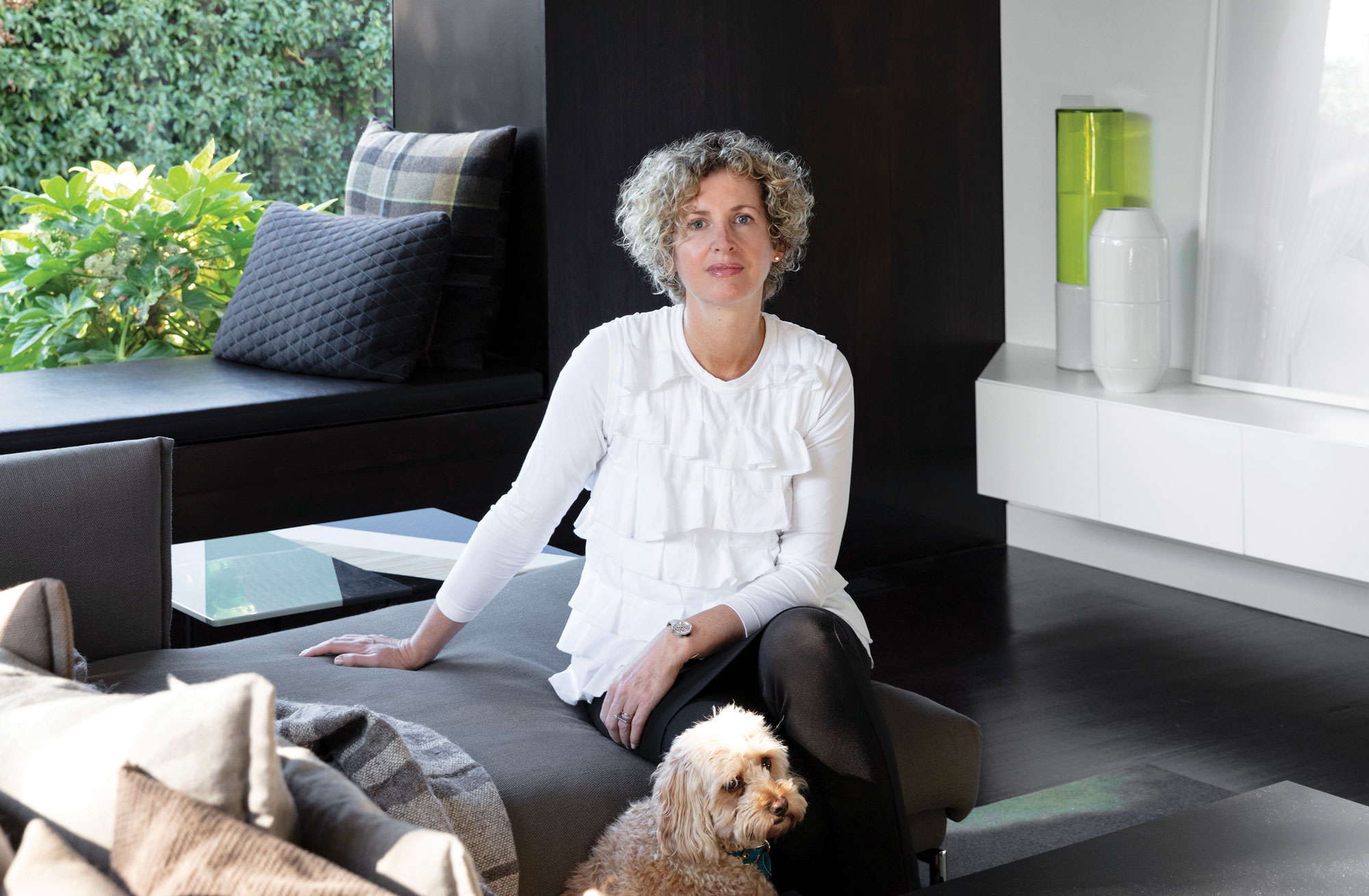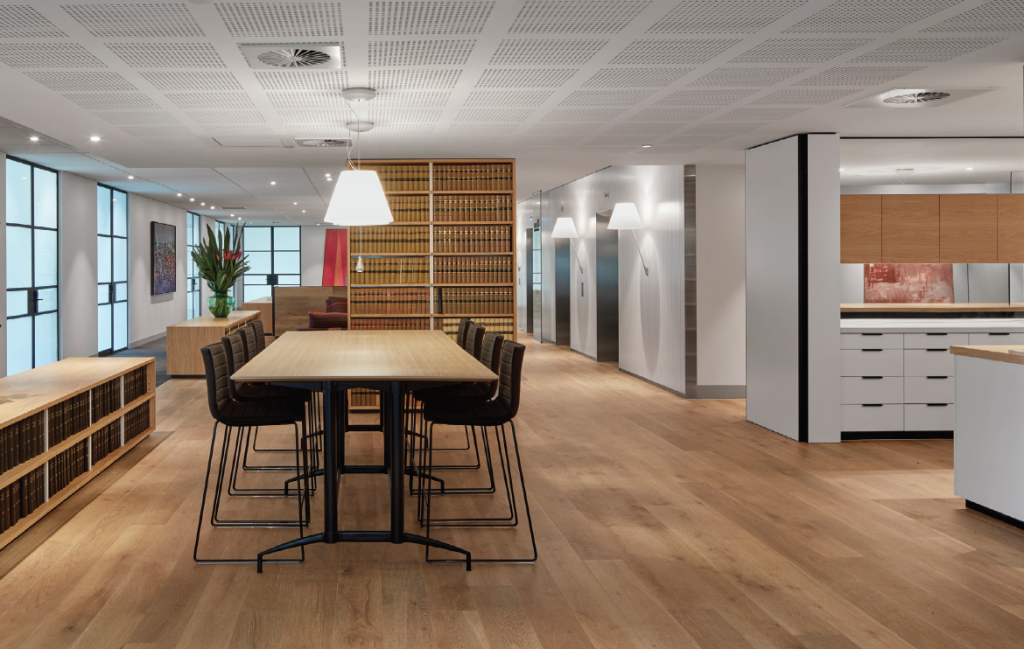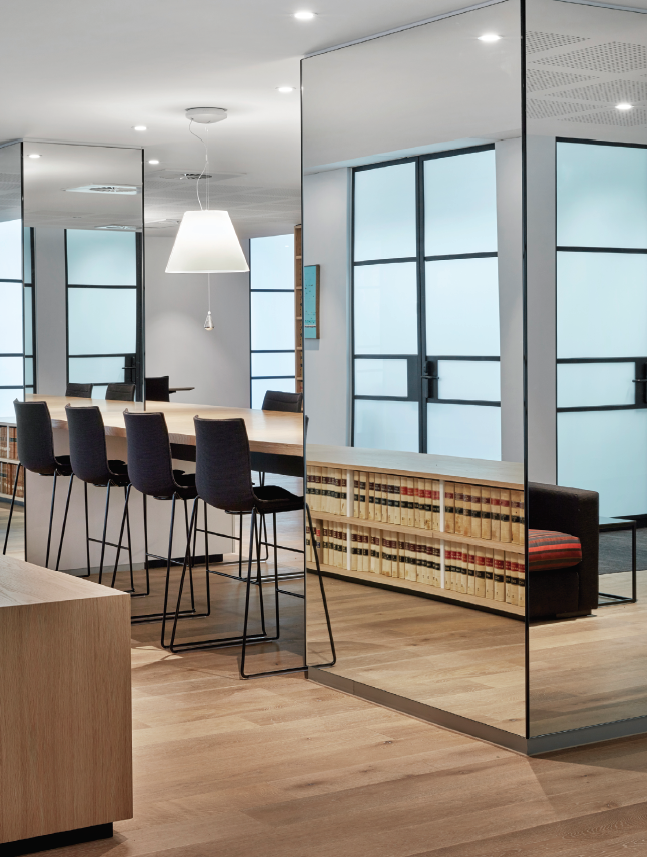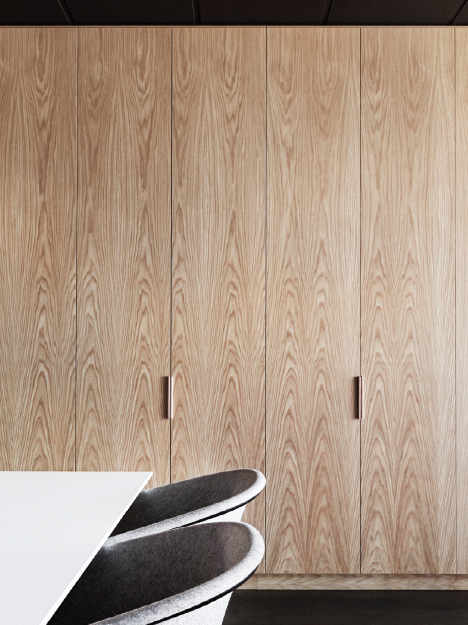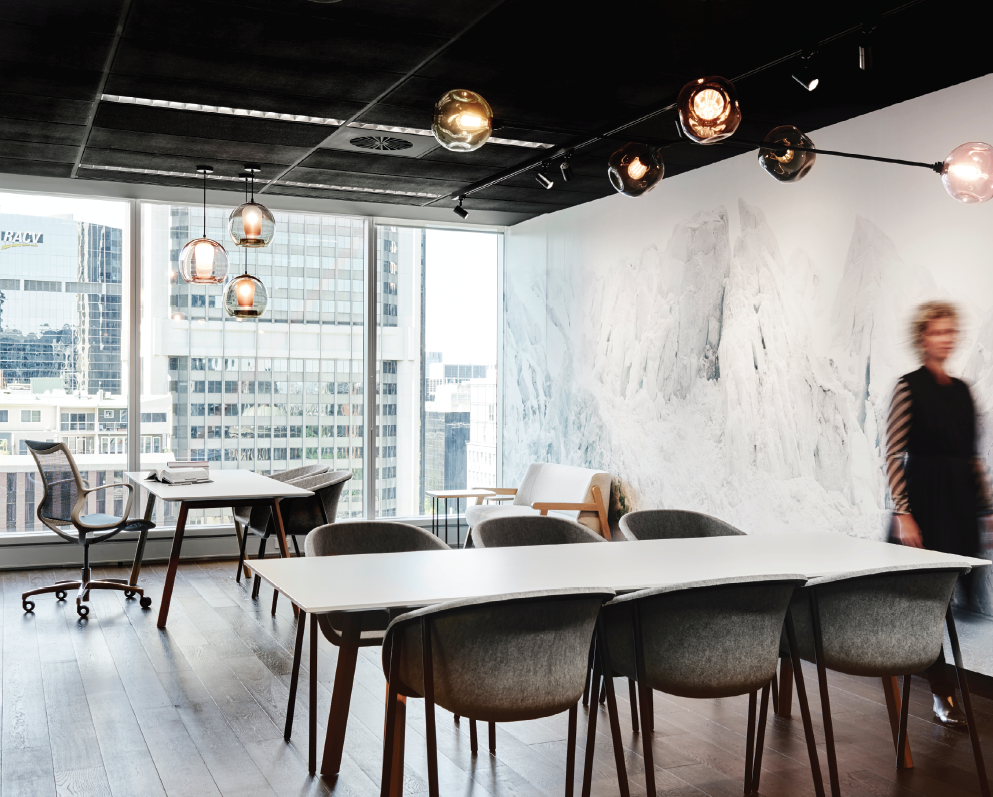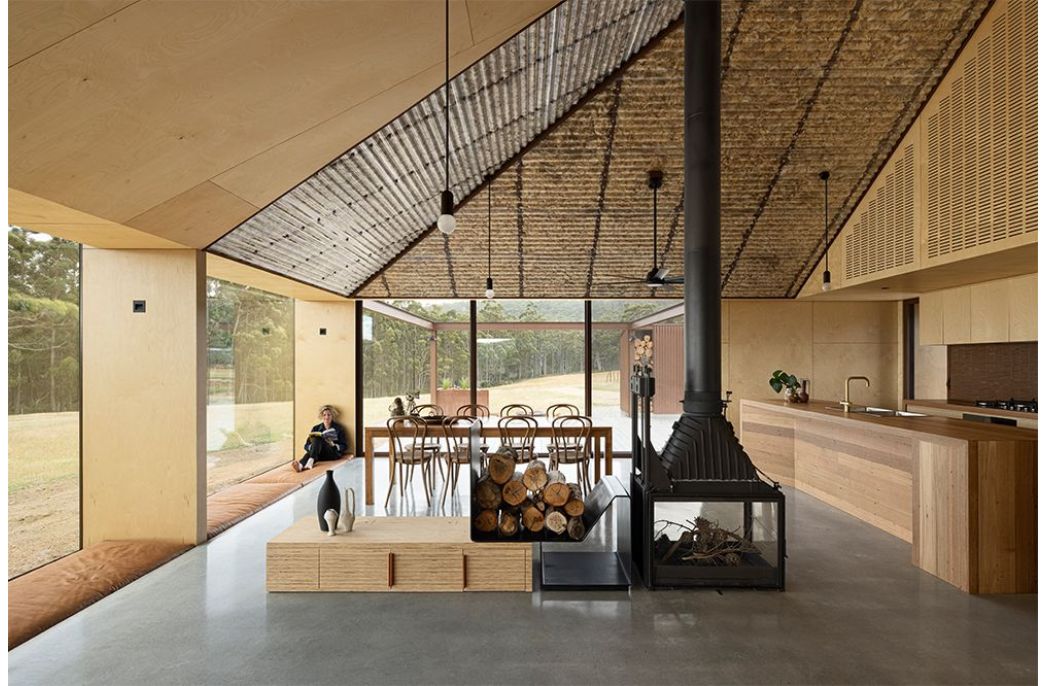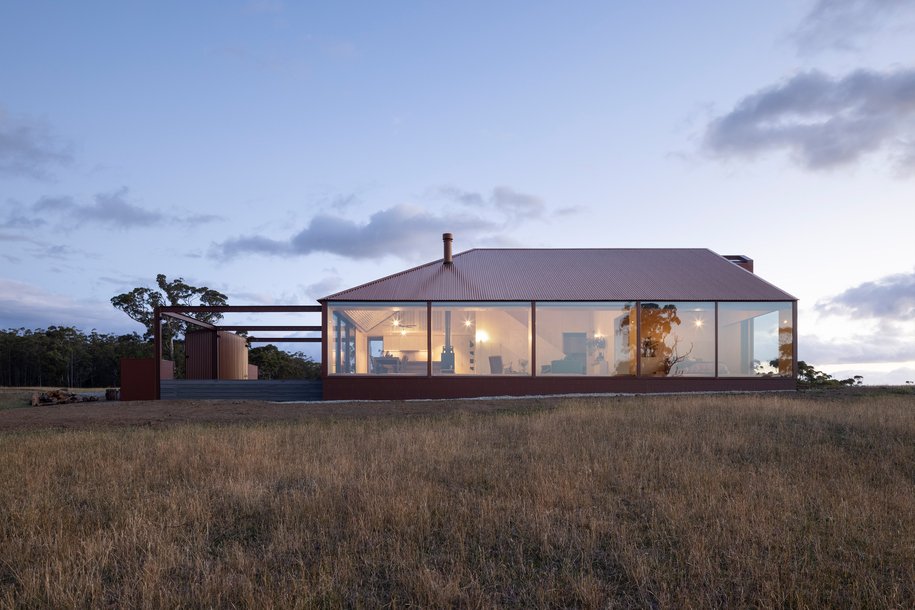
Legal union: Castan Chambers
Legal union: Castan Chambers
Share
Project – Barrister’s Chamber
Design – fmd Architects
Photography – Brooke Holm
Interior architecture – Gray Puksand
Text – Jan Henderson
Location – Melbourne, Australia
Design can change the way people live and work, how they feel and the way they go about their daily routines. Take the legal fraternity, and barristers in particular, and the workplaces they inhabit. There is the perception of legal rooms of old with brown leather chesterfields and dark wood panelling, and the omnipresent piles of journals and legal books. At Castan Chambers, however, the barristers that make up this group have rethought their environment and agreed upon an office interior that embraces a sophisticated and contemporary style more suited to 2016.
These new chambers are located in the legal precinct spread over two floors high above Melbourne city and each floor contains rooms for 20 and 15 barristers respectively. Although the Chambers is a collective, each member works independently; however, there was a mutual consensus when it came to the design of the common areas.
This collegiate approach was mirrored by the fact that the renovation of the areas was equally a cooperative venture between three architecture and design practices. Inarc Architects designed the public areas, fmd Architects focused on one of the barrister’s chambers and Gray Puksand was responsible for the documentation, administration and project management of the project (and also the individual fi touts of each chamber). There was a tight schedule for the build, but through collaboration between client and the architecture and design practices, the project was completed on time and on budget.
The two floor plans of the Castan Chambers have a similar footprint with the rooms arranged around the edge of the large middle common area. This allows for natural light to fill the office spaces where the day-to-day work is conducted; however, this floor plan created a problem – how to allow natural light to filter into the interior of the floor? To resolve this, Inarc Architects director Christopher Hansson has incorporated thin, black powder-coated, steel-framed glass doors as the entry to each chamber, and this simple solution has helped to provide a large amount of natural light into the interior. Barristers’ work is for the most part sensitive and, as such, a major requirement was for a high level of acoustic segregation.
Acoustic expert design group, Hanson Associates, was consulted to ensure that there was adequate soundproofing and the necessary requirements were seamlessly integrated into Inarc’s design. The common areas on both floors contain a reception and client meeting area, meeting rooms and kitchen and utility facilities, but they have each been configured to the tenants’ needs. For example, the kitchen on the upper floor is open plan and a good place to meet for Friday night drinks, whereas the lower floor has an enclosed kitchen dining area. The colour palette is warm and light with accents of dark brown and black.
The lower floor reception area has been tiled (Fibonacci) and timber tongue and groove 153-millimetre wide boards (Royal Oak, white smoked) have been used on the upper floor. The joinery finishes are white laminate and European oak veneer that match the timber floor. On the lower level there are timber armchairs (Claude, Ritzwell, Stylecraft), sofas (Alfred, Jardan) and small coffee tables (Oblique, Prostoria, Luke Furniture) with floor and table lamps (Luceplan, JSB Lighting) sporting white shades.
On the upper floor, armchairs and lighting remain the same, however there is a different sofa (Bosko, Jardan) and coffee tables (Frame, Prostoria, Luke Furniture) with rugs (Tretford, Gibbon Group) placed to delineate seating areas. The meeting rooms contain task chairs (B5, Stylecraft) and the kitchen areas have bar stools (Catifa, Stylecraft) around a large table (Blade, Stylecraft and Carma contract table, Luke Furniture). In all, the atmosphere is relaxed and modern, but with a touch of restrain that sets the tone of the business at hand.
Each barrister had the opportunity to individualise his/her own chamber and so no two are the same; however, there is one standout that definitely makes a statement. This chamber was designed by Fiona Dunin from fmd Architects and, having completed previous projects for this client, she was perfectly placed to interpret his needs and desires. Dunin has created an enveloping space with the colour black. The original ceiling tiles have been painted black and the American oak timber floor has been stained black (Royal Oak).
Interestingly, this opens up the space as a blank canvas would and is not at all oppressive. Custom joinery has also been made from American oak, but with a clear finish and recessed leather pulls (Made Measure) and this adds softness to the room. There is a large glass window with excellent views of the city below and this adjoins the main wall where Dunin has placed a two-seat sofa and side tables (Harper sofa and Nash tables, Jardan) in front of a very large photograph of an arctic landscape (Brooke Holm’s Arctic series) that lifts the area and merges it with the sky outside.
On the other side of the window is the barrister’s desk (Tailored, Ross Gardam, Stylecraft) with task chair (B5, Stylecraft) and in the middle is a conference/work table (Tailored, Ross Gardam, Stylecraft) and comfortable chairs (Tub, Devorm, Great Dane). It is, however, the inclusion of two pendant lights (Mark Douglass) that creates a feeling of being at home, relaxing in a contemporary space, that pulls the room together. This barrister’s chambers is out-of-the-box and absolutely at the other end of the ‘leather chesterfield’ spectrum, but the design has interpreted the requirements of the client moving one design step further and pushing the boundaries of style and good taste.
As the barristers of Castan Chambers work separately and together so did the different designers and architects involved with this multilayered project. The end result shows that, just as the barristers have embraced a new era of design, the different parts that were Inarc Architects, fmd Architects and Gray Puksand contributed to a greater ‘whole’ and the barristers at Castan Chambers are more than happy with the result.
You Might also Like

